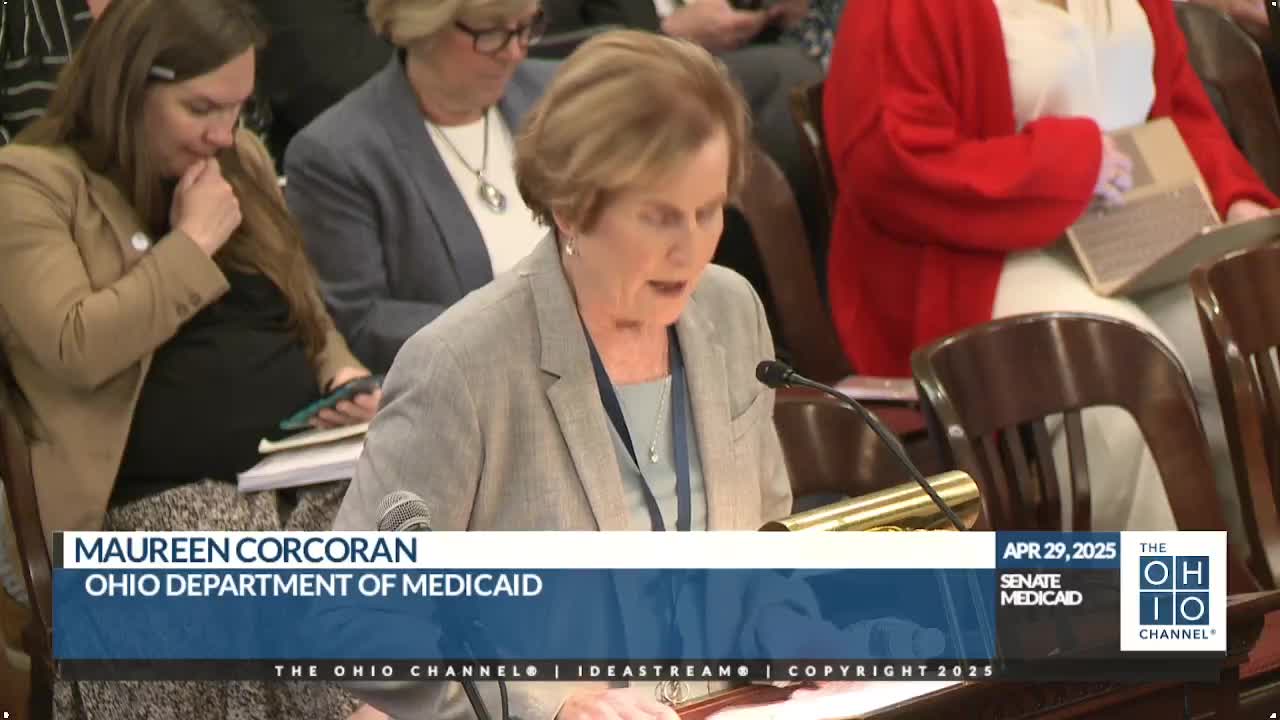Ohio Budget Committee reviews aging population's impact on Medicaid costs
April 29, 2025 | Medicaid, Senate, Committees, Legislative, Ohio
This article was created by AI summarizing key points discussed. AI makes mistakes, so for full details and context, please refer to the video of the full meeting. Please report any errors so we can fix them. Report an error »

During a recent meeting of the Ohio Senate Medicaid Committee, key discussions highlighted the ongoing challenges and financial implications facing the state's Medicaid program. A significant focus was placed on the rising costs associated with an aging population and the increasing demand for healthcare services, particularly among older and disabled residents.
The committee reviewed a detailed breakdown of Medicaid expenditures, noting that the costs per member per month are closely tied to the growing caseload of elderly and disabled individuals. This demographic shift is expected to account for approximately 40% of the total cost growth in the upcoming fiscal year, underscoring the urgent need for effective budget management and resource allocation.
Additionally, the impact of enhanced federal funding from the American Rescue Plan Act (ARPA) was discussed. Ohio has received over $5 billion in federal funds, which have been utilized to offset general revenue costs. This funding is crucial as it helps stabilize the budget while addressing the increasing healthcare needs of the population.
The committee also examined the rising costs of prescription drugs, which are significantly affecting Medicaid expenditures. Notably, the costs associated with certain treatments have skyrocketed, with some therapies exceeding $4 million per treatment. This trend is expected to contribute to a projected increase in overall Medicaid costs, with drug expenses anticipated to rise from 6.2% to 12.2% of the per member per month costs by 2027.
Behavioral health services were another critical topic, with over 40% of Medicaid enrollees receiving treatment last year. The committee noted a concerning trend in behavioral health conditions, particularly in rural and Appalachian areas, where more than half of certain groups of enrollees are diagnosed with behavioral health issues. This highlights the need for targeted interventions and support for these vulnerable populations.
As Ohio navigates these complex challenges, the discussions from the Medicaid Committee meeting emphasize the importance of strategic planning and resource management to ensure that the state's Medicaid program can continue to meet the needs of its residents effectively. The committee's findings will play a crucial role in shaping future policies and budget decisions aimed at improving healthcare access and outcomes for Ohioans.
The committee reviewed a detailed breakdown of Medicaid expenditures, noting that the costs per member per month are closely tied to the growing caseload of elderly and disabled individuals. This demographic shift is expected to account for approximately 40% of the total cost growth in the upcoming fiscal year, underscoring the urgent need for effective budget management and resource allocation.
Additionally, the impact of enhanced federal funding from the American Rescue Plan Act (ARPA) was discussed. Ohio has received over $5 billion in federal funds, which have been utilized to offset general revenue costs. This funding is crucial as it helps stabilize the budget while addressing the increasing healthcare needs of the population.
The committee also examined the rising costs of prescription drugs, which are significantly affecting Medicaid expenditures. Notably, the costs associated with certain treatments have skyrocketed, with some therapies exceeding $4 million per treatment. This trend is expected to contribute to a projected increase in overall Medicaid costs, with drug expenses anticipated to rise from 6.2% to 12.2% of the per member per month costs by 2027.
Behavioral health services were another critical topic, with over 40% of Medicaid enrollees receiving treatment last year. The committee noted a concerning trend in behavioral health conditions, particularly in rural and Appalachian areas, where more than half of certain groups of enrollees are diagnosed with behavioral health issues. This highlights the need for targeted interventions and support for these vulnerable populations.
As Ohio navigates these complex challenges, the discussions from the Medicaid Committee meeting emphasize the importance of strategic planning and resource management to ensure that the state's Medicaid program can continue to meet the needs of its residents effectively. The committee's findings will play a crucial role in shaping future policies and budget decisions aimed at improving healthcare access and outcomes for Ohioans.
View full meeting
This article is based on a recent meeting—watch the full video and explore the complete transcript for deeper insights into the discussion.
View full meeting
